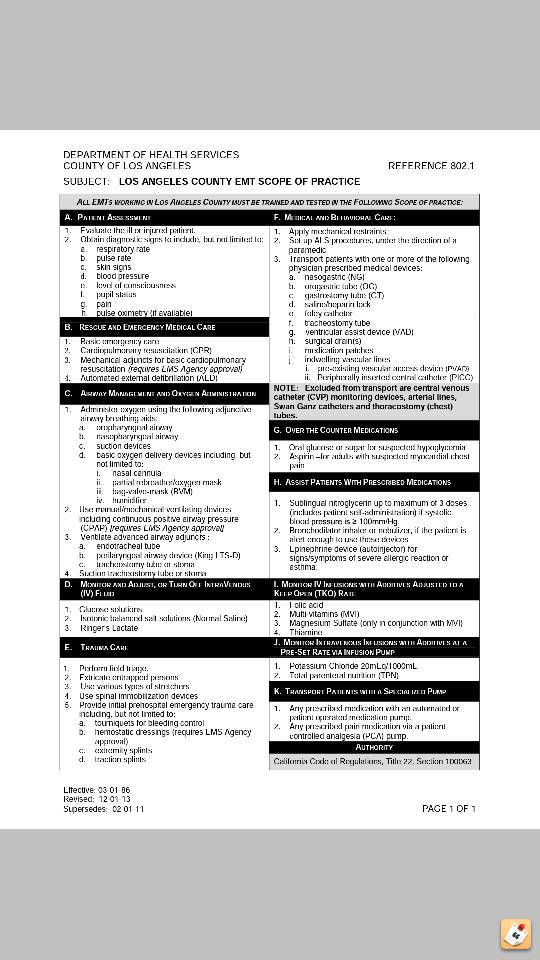I am just wondering how 'basic' is BLS in your area. I was reading some of the other threads and I'm amazed.
In my region/area an EMT-B can do
CPR
AED
Oxygen
Pulse Oximetry
Glucometry
Oral Glucose Administration
Epi-Pen
Albuterol
Asprin
Atropine auto injector (Organophosphate poisoining and WMD)
Assisted Nitro
OPA
NPA
Clotting Sponges
1 attempt to reduce a fx if distal pulse is missing
Plus all of the splinting, backboarding, bandaging, etc
And on the way:
Nasal Narcan
CPAP
Expanded Nitro protocol (Systolic of 100)
Epi-pen for asthmatics not responsive to albuterol with med-control
Venturi masks
Automatic Transport vents
Talked about possibly coming
ETCO2 readings (numbers, not waveform)
King/rescue airways
Hearing some of the stories of what BLS can do in other parts of the country, make this seem like a fully stocked ALS unit
In my region/area an EMT-B can do
CPR
AED
Oxygen
Pulse Oximetry
Glucometry
Oral Glucose Administration
Epi-Pen
Albuterol
Asprin
Atropine auto injector (Organophosphate poisoining and WMD)
Assisted Nitro
OPA
NPA
Clotting Sponges
1 attempt to reduce a fx if distal pulse is missing
Plus all of the splinting, backboarding, bandaging, etc
And on the way:
Nasal Narcan
CPAP
Expanded Nitro protocol (Systolic of 100)
Epi-pen for asthmatics not responsive to albuterol with med-control
Venturi masks
Automatic Transport vents
Talked about possibly coming
ETCO2 readings (numbers, not waveform)
King/rescue airways
Hearing some of the stories of what BLS can do in other parts of the country, make this seem like a fully stocked ALS unit

